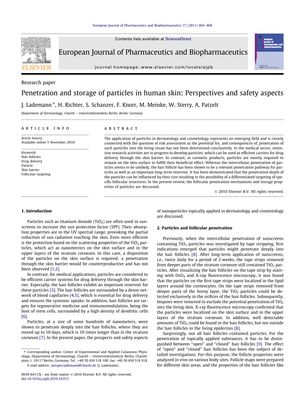TLDR Particles around 100 nm can penetrate and stay in hair follicles without passing through healthy skin, making them safe for use in topical products and useful for targeted drug delivery.
The document from April 1, 2011, examined the penetration and storage of particles, especially titanium dioxide (TiO₂), in human skin, emphasizing safety and drug delivery. It was discovered that particles approximately 100 nm in size could deeply penetrate and be stored in hair follicles for up to 10 days, which is longer than their retention in the stratum corneum. The study indicated that particle size could be manipulated to target specific follicular structures for drug delivery. It was also found that these particles do not pass through the healthy skin barrier, making them safe for topical use in products like sunscreens. Furthermore, the particles' ability to target follicular structures makes them promising for treating conditions like androgenetic alopecia and acne, as well as for hair growth control. The document concluded that particles larger than 100 nm do not penetrate healthy skin, and research is ongoing for nanoparticles smaller than 100 nm. The potential of hair follicles as a route for drug delivery was emphasized, with particulate carrier systems being advantageous for delivering drugs to specific follicular sites. The release of drugs from nanoparticles at the correct target site is an active area of research, and the study acknowledged financial support from the Foundation “Skin Physiology" of the Donor Association for German Science and Humanities.
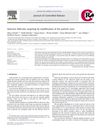 263 citations
,
February 2011 in “Journal of Controlled Release”
263 citations
,
February 2011 in “Journal of Controlled Release” Medium-sized particles penetrate hair follicles better than smaller or larger ones, which could improve delivery of skin treatments.
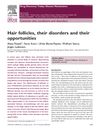 48 citations
,
May 2008 in “Drug Discovery Today: Disease Mechanisms”
48 citations
,
May 2008 in “Drug Discovery Today: Disease Mechanisms” Hair follicles offer promising targets for delivering drugs to treat hair and skin conditions.
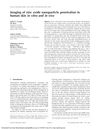 264 citations
,
January 2008 in “Journal of biomedical optics”
264 citations
,
January 2008 in “Journal of biomedical optics” Zinc oxide nanoparticles in sunscreen do not penetrate deep into the skin.
46 citations
,
May 2006 in “Laser Physics” Particles similar in size to hair cells penetrate hair follicles better.
323 citations
,
April 2006 in “The journal of investigative dermatology/Journal of investigative dermatology” Only 40 nm nanoparticles can enter skin cells effectively for potential vaccine delivery.
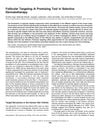 109 citations
,
November 2005 in “The journal of investigative dermatology. Symposium proceedings/The Journal of investigative dermatology symposium proceedings”
109 citations
,
November 2005 in “The journal of investigative dermatology. Symposium proceedings/The Journal of investigative dermatology symposium proceedings” Targeting hair follicles can improve skin treatments and reduce side effects.
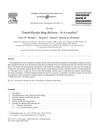 141 citations
,
November 2005 in “International journal of pharmaceutics”
141 citations
,
November 2005 in “International journal of pharmaceutics” Hair follicles may soon be used more for targeted and systemic drug delivery.
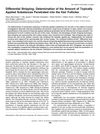 162 citations
,
August 2005 in “The journal of investigative dermatology/Journal of investigative dermatology”
162 citations
,
August 2005 in “The journal of investigative dermatology/Journal of investigative dermatology” The new "differential stripping" method effectively measures how much substance gets into hair follicles.
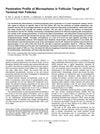 316 citations
,
June 2004 in “The journal of investigative dermatology/Journal of investigative dermatology”
316 citations
,
June 2004 in “The journal of investigative dermatology/Journal of investigative dermatology” Microspheres about 1.5 micrometers in size can best penetrate hair follicles, potentially reaching important stem cells.
405 citations
,
January 2004 in “Journal of Investigative Dermatology” Hair follicle size and distribution vary significantly across different body sites.
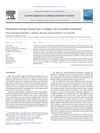 211 citations
,
June 2012
211 citations
,
June 2012 The skin is a complex barrier for drug penetration, but understanding its structure and interactions can improve drug delivery methods.
 August 2025 in “Aesthetic Cosmetology and Medicine”
August 2025 in “Aesthetic Cosmetology and Medicine” Blue light can damage hair and scalp, leading to hair loss.
122 citations
,
December 2022 in “International Journal of Molecular Sciences” Nanoparticles improve skin treatment but need more research on safety and effectiveness.
 16 citations
,
October 2023 in “Molecular cancer”
16 citations
,
October 2023 in “Molecular cancer” New treatments like nanotechnology show promise in improving skin cancer therapy.
 June 2025 in “Journal of Cluster Science”
June 2025 in “Journal of Cluster Science” Metal nanoparticles show promise for treating hair loss but need more research to ensure safety.
